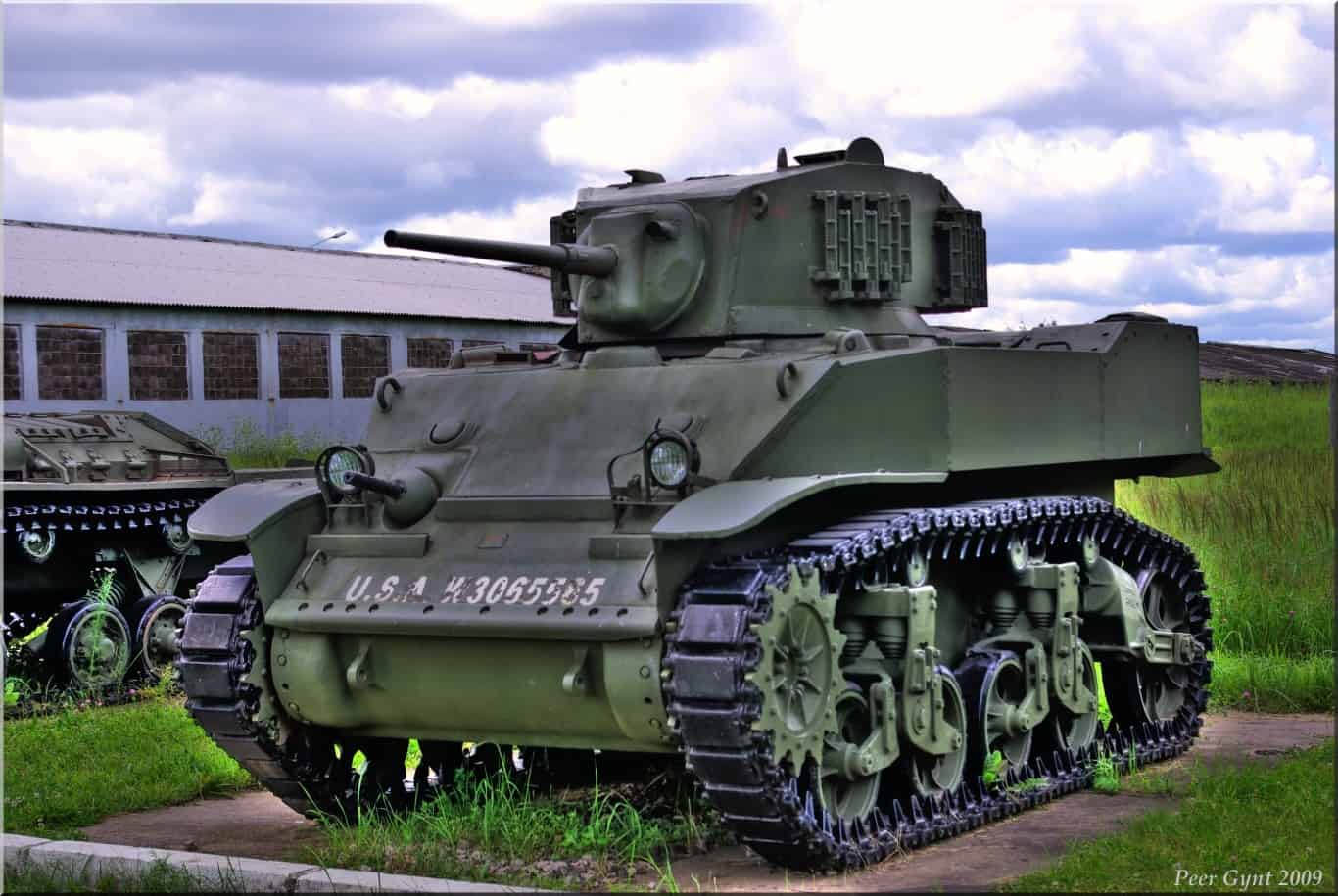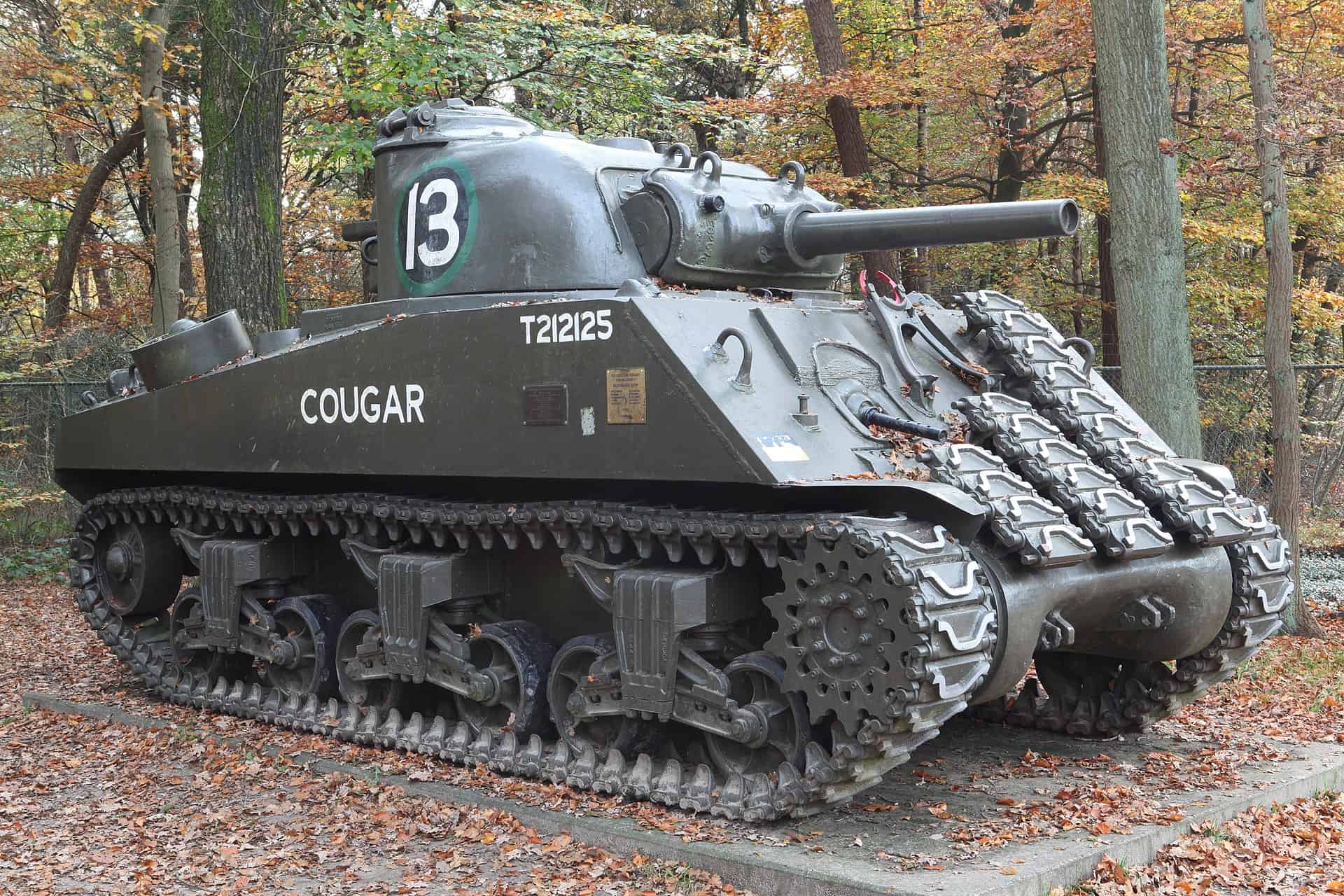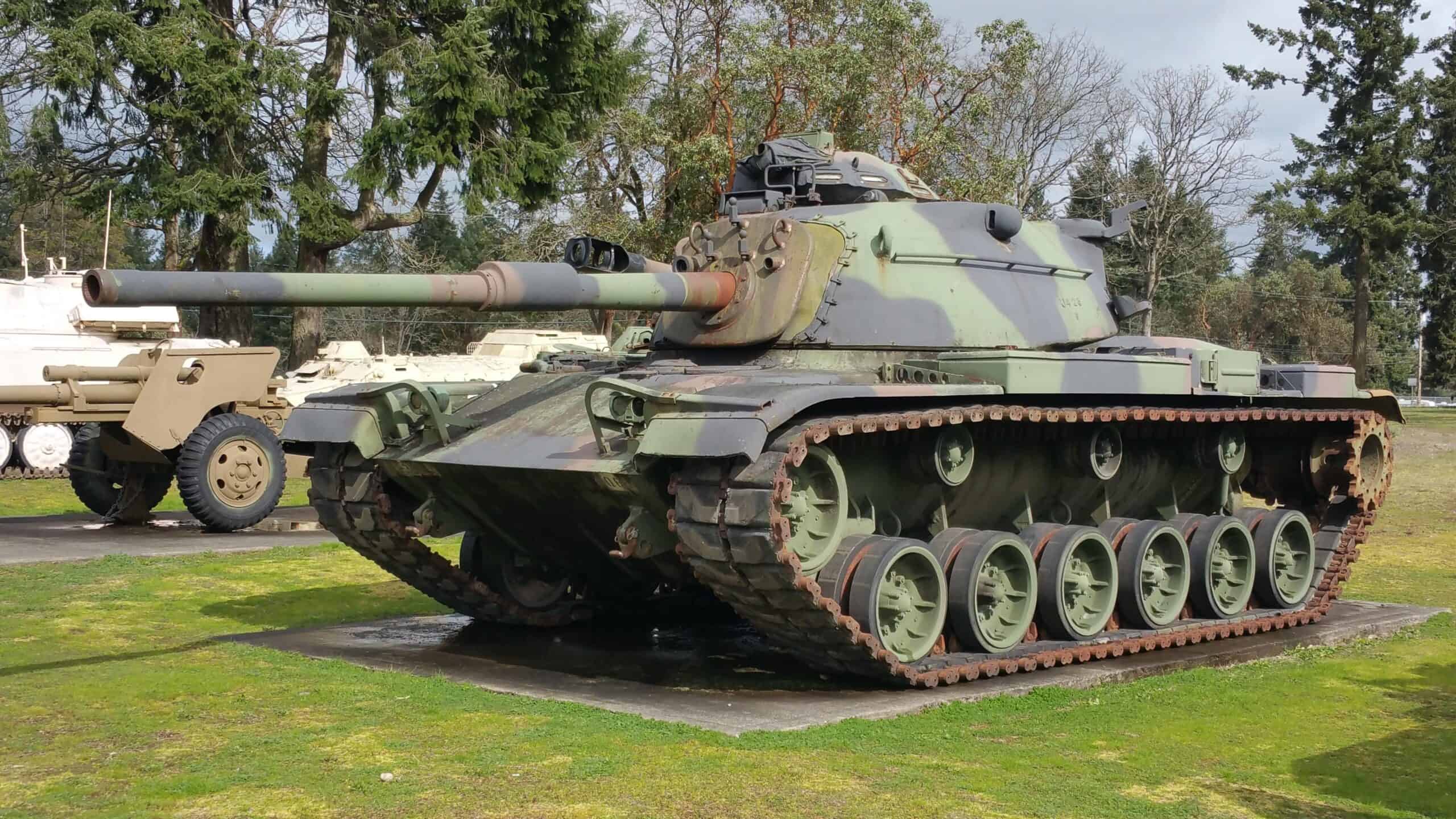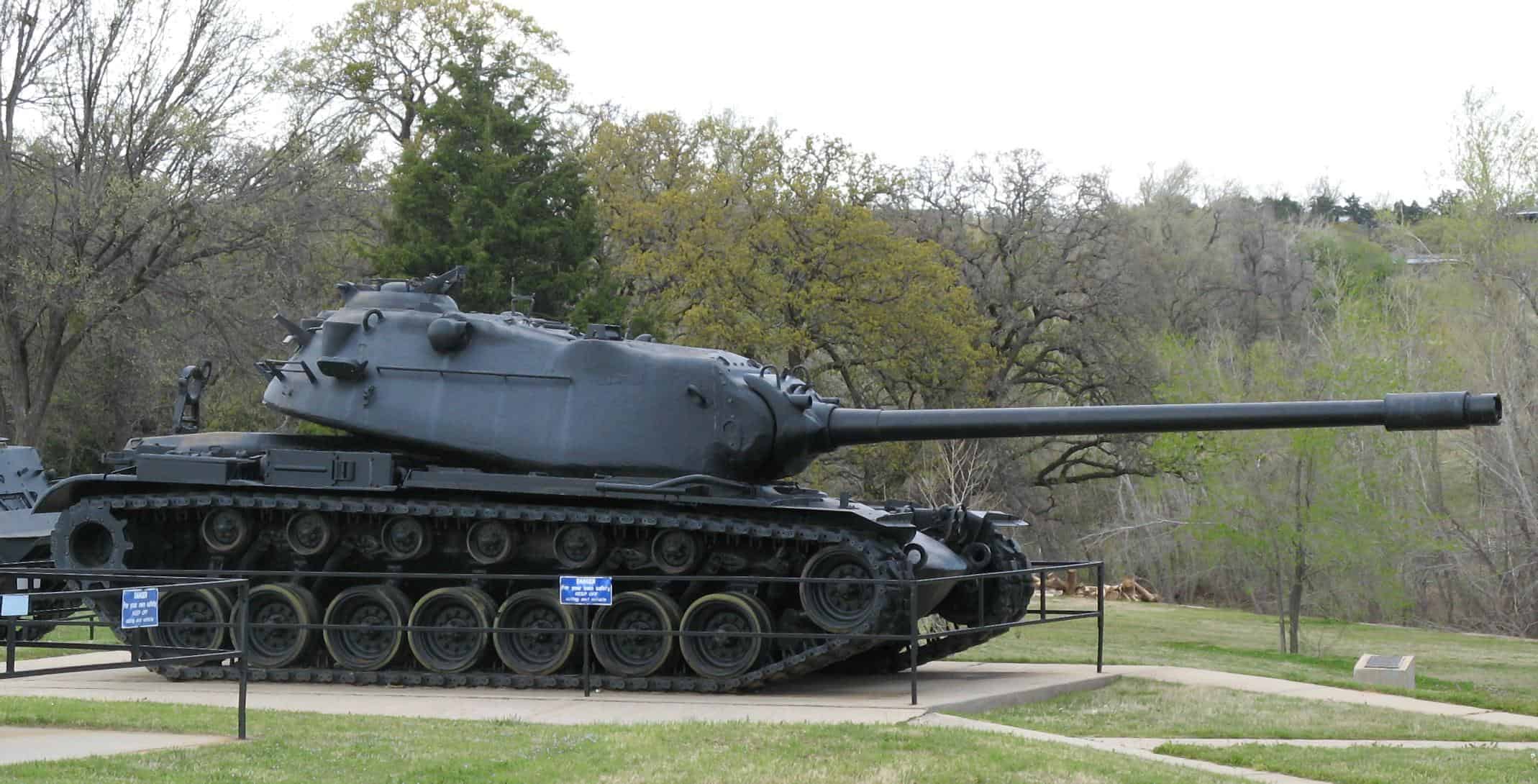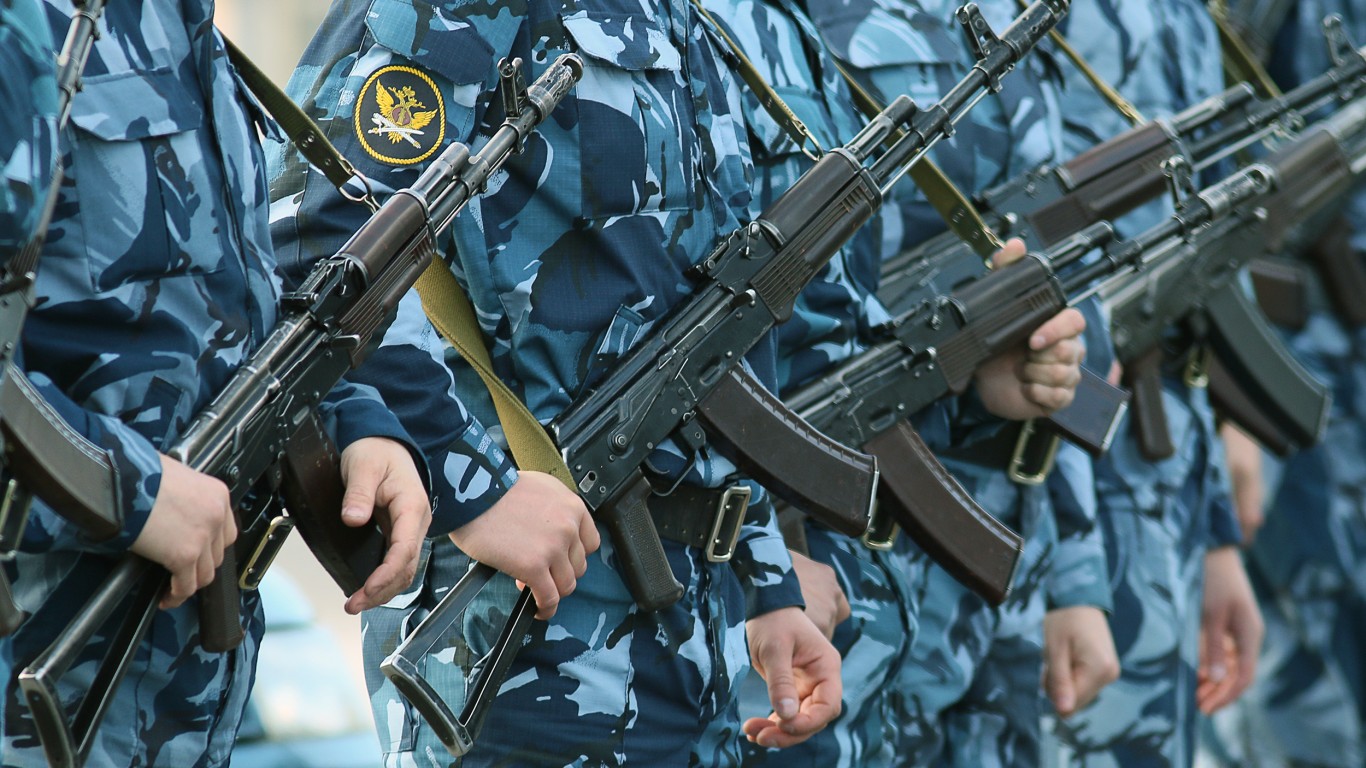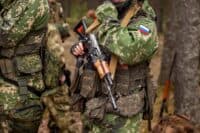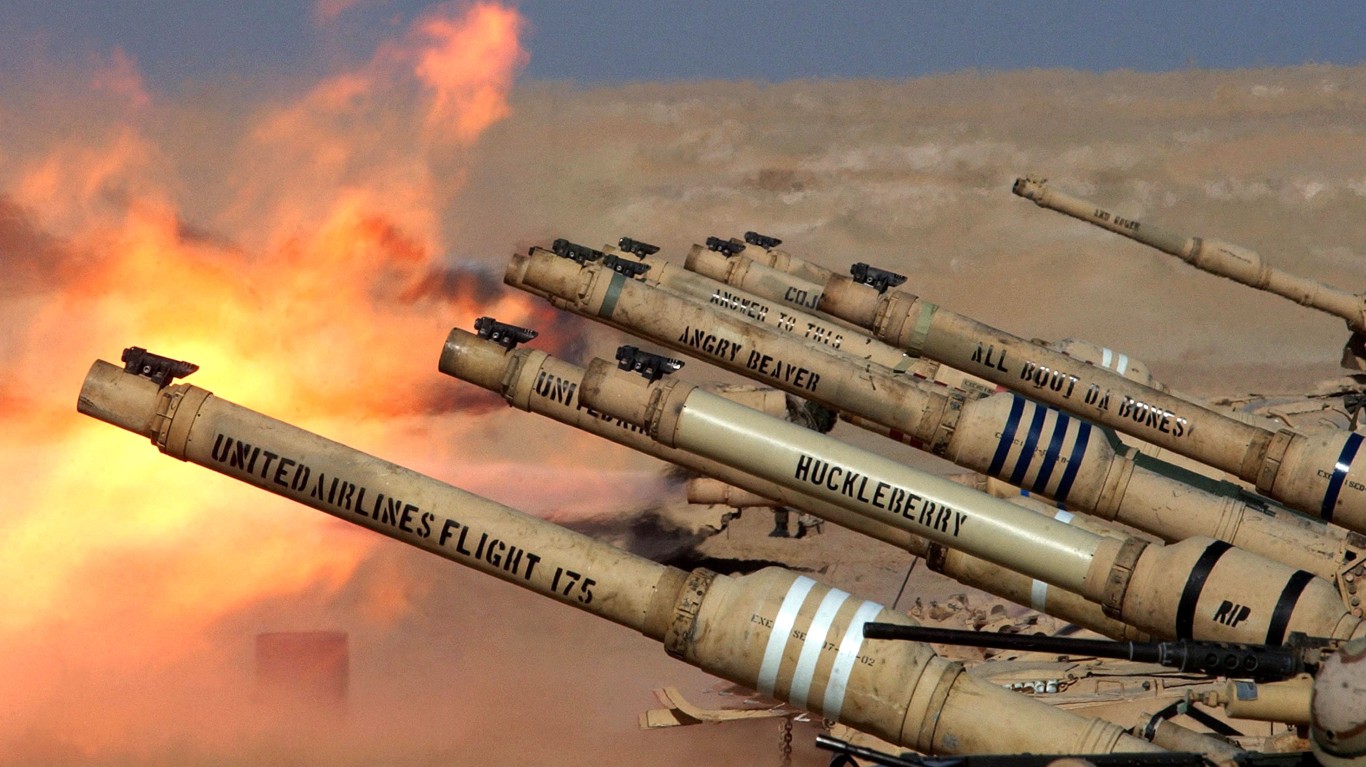
24/7 Wall St. Insights:
- The M1 Abrams was originally developed to replace the M60 Patton
- It features a 120mm smoothbore Rheinmetall cannon as its primary armament
- The M1 Abrams can reach speeds over 40 mph with its Honeywell AGT1500 gas turbine engine
Also: Dividend legends to hold forever
Known as one of the biggest and baddest tanks to enter the battlefield, the M1 Abrams is a staple of U.S. military might on the ground. Although it was introduced almost half a century ago, the M1 Abrams features advanced tech, formidable firepower, and superior armor that rivals even the newest main battle tanks.
Originally developed to replace the M60 Patton, the design of the M1 Abrams is focused on firepower. The main gun is a 120mm smoothbore Rheinmetall cannon, which can fire a variety of munitions including armor-piercing and high-explosive rounds. Since the 1980s, the Abrams has adopted an onboard fully digital Ballistic Computer System (BCS) which helps with advanced targeting. (This Russian tank has bigger guns than the M1 Abrams.)
The tank can reach speeds over 40 mph with an output of 1,500 horsepower as it’s powered by the Honeywell AGT1500 gas turbine engine which can operate on a variety of fuels. It has a fuel capacity of roughly 500 gallons, which is enough fuel to last for almost 300 miles without refueling.
The M1 Abrams is the biggest tank to date built for the United States weighing in at a whopping 139,000 pounds. It is one of many tanks that has played an integral part of the military history of the U.S. (These are the 30 most mass-produced tanks since WWII ended.)
24/7 Wall St. is taking a closer look at American-made tanks. To determine the biggest tanks in U.S. military history, 24/7 Wall St. reviewed a list of tanks used by the U.S. military from Military Factory, an online database of military vehicles, aircraft, arms and more used by militaries across the world. All U.S. tanks are ranked here according to their weight. Additional data on the type of tank, crew size, and more also came from Military Factory. We excluded tanks that were not mass-produced or had production runs less than 250 units.
Here is a look at the biggest U.S. tanks ever built:
Why Are We Covering This?
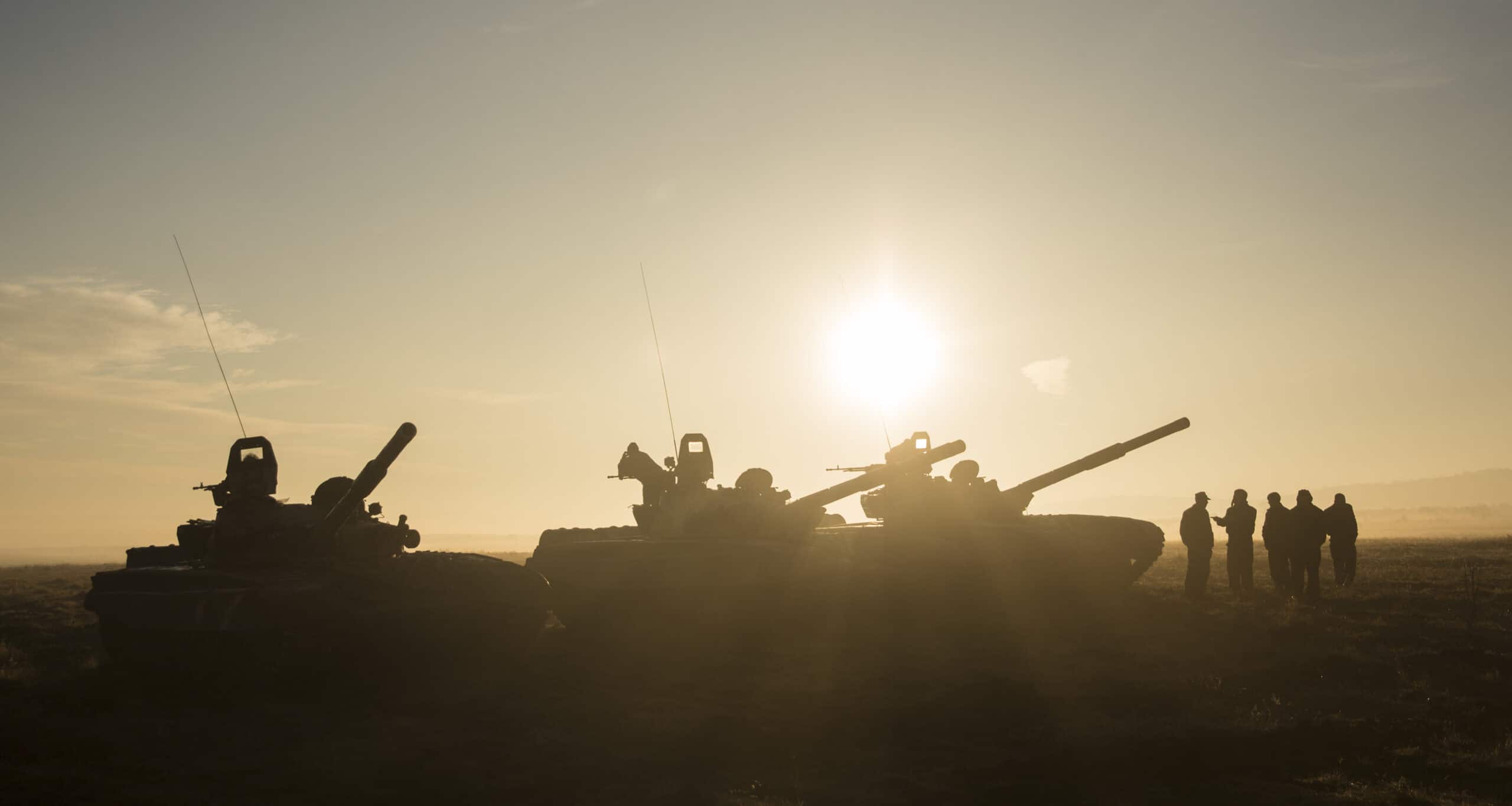
Understanding the history of U.S. tanks gives context to their impact on military strategy, technological advancements, and the outcomes of many important conflicts. Ultimately, this plays into national defense strategies, training, and further advancements in armored warfare.
20. Marmon-Herrington CTLS

- Type: Light tank / tankette
- Year entered service: 1935
- Top speed: 32.9 mph
- Crew size: 2
- Weight: 9,480 lbs
- Armament: 12.7mm M2 heavy machine gun, 7.62mm machine guns
19. M1917 6-ton

- Type: Light two-man combat tank
- Year entered service: 1918
- Top speed: 5.5 mph
- Crew size: 2
- Weight: 14,506 lbs
- Armament: 37mm cannon, 7.62mm machine gun
18. M22 Locust (Light tank, Airborne, M22)
- Type: Airborne infantry light tank
- Year entered service: 1943
- Top speed: 39.8 mph
- Crew size: 3
- Weight: 16,400 lbs
- Armament: 37mm M6 main gun, 7.62mm machine gun
17. M2
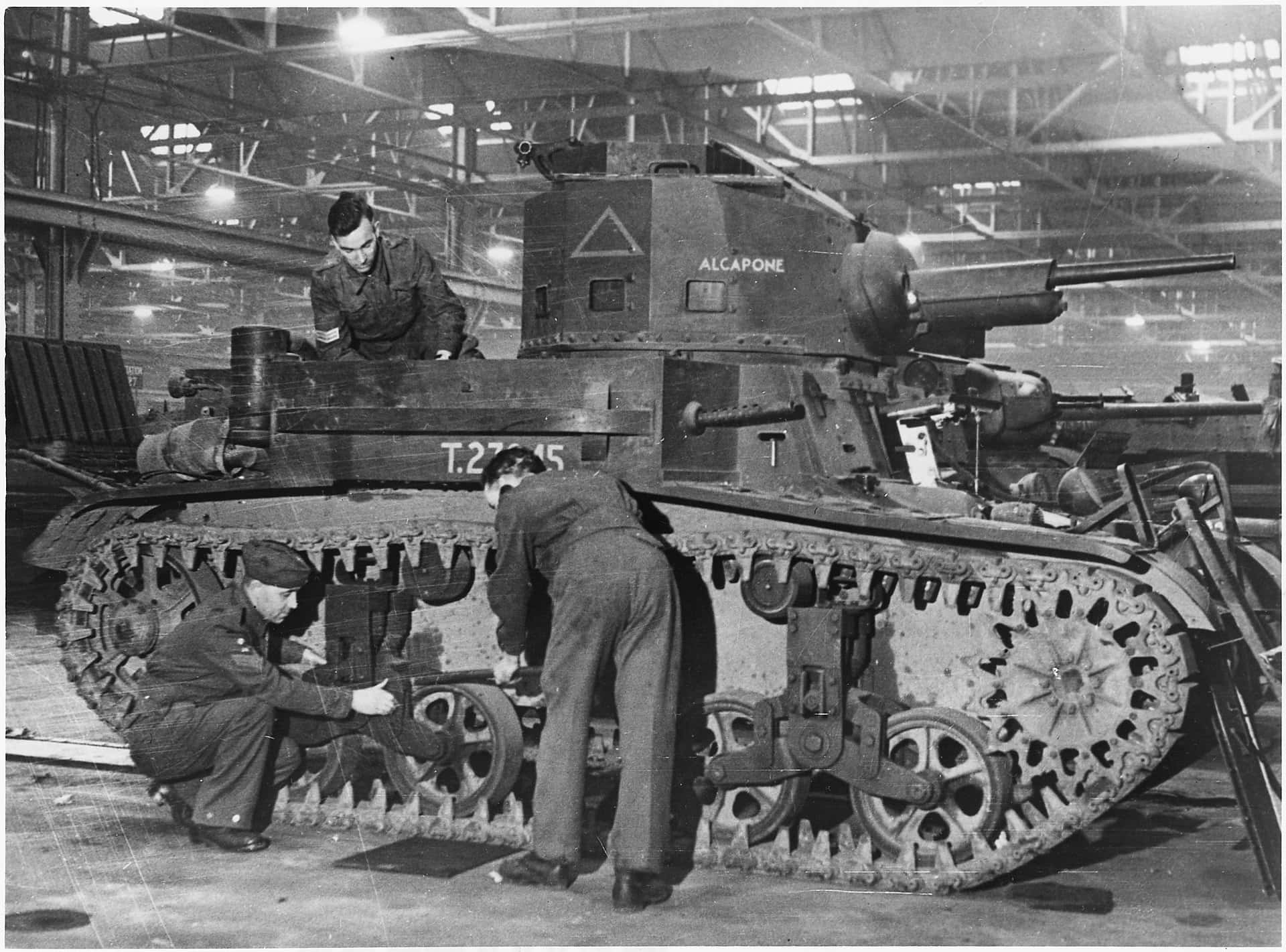
- Type: Light tank
- Year entered service: 1935
- Top speed: 34.8 mph
- Crew size: 4
- Weight: 25,574 lbs
- Armament: 37mm M6 main gun, 12.7mm M2 heavy machine gun, 7.62mm machine guns
16. M3 Stuart
- Type: Light tank
- Year entered service: 1941
- Top speed: 36 mph
- Crew size: 4
- Weight: 28,440 lbs
- Armament: 37mm M6/M7 main gun, 7.62mm machine guns
15. M5 Stuart
- Type: Light tank
- Year entered service: 1942
- Top speed: 36 mph
- Crew size: 4
- Weight: 33,069 lbs
- Armament: 37mm M6 main gun, 7.62mm machine guns
14. M551 Sheridan
- Type: Armored reconnaissance airborne assault vehicle
- Year entered service: 1968
- Top speed: 43.5 mph
- Crew size: 4
- Weight: 33,510 lbs
- Armament: 152mm M81E1 main gun, 12.7mm machine guns, 7.62mm machine guns, smoke grenade dischargers, Shillelagh missiles
13. M24 Chaffee
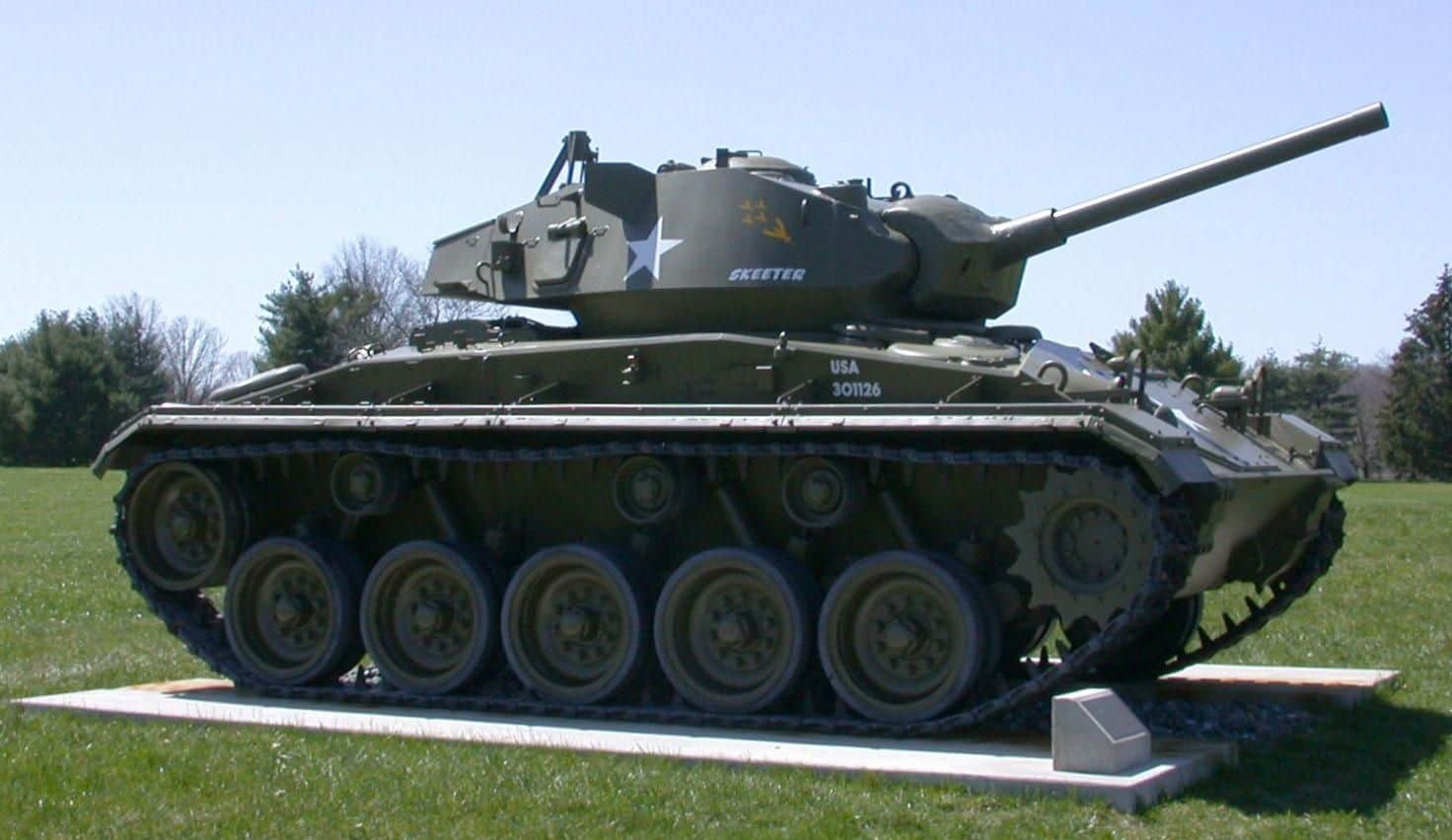
- Type: Reconnaissance light tank
- Year entered service: 1944
- Top speed: 34.8 mph
- Crew size: 5
- Weight: 39,838 lbs
- Armament: 75mm main gun, 12.7mm machine gun, 7.62mm machine guns, smoke mortar
12. M41 Walker Bulldog
- Type: Light tank tracked combat vehicle
- Year entered service: 1951
- Top speed: 45 mph
- Crew size: 4
- Weight: 51,798 lbs
- Armament: 76mm M32 main gun, 12.7mm machine gun, 7.62mm machine gun
11. M3 Lee / M3 Grant
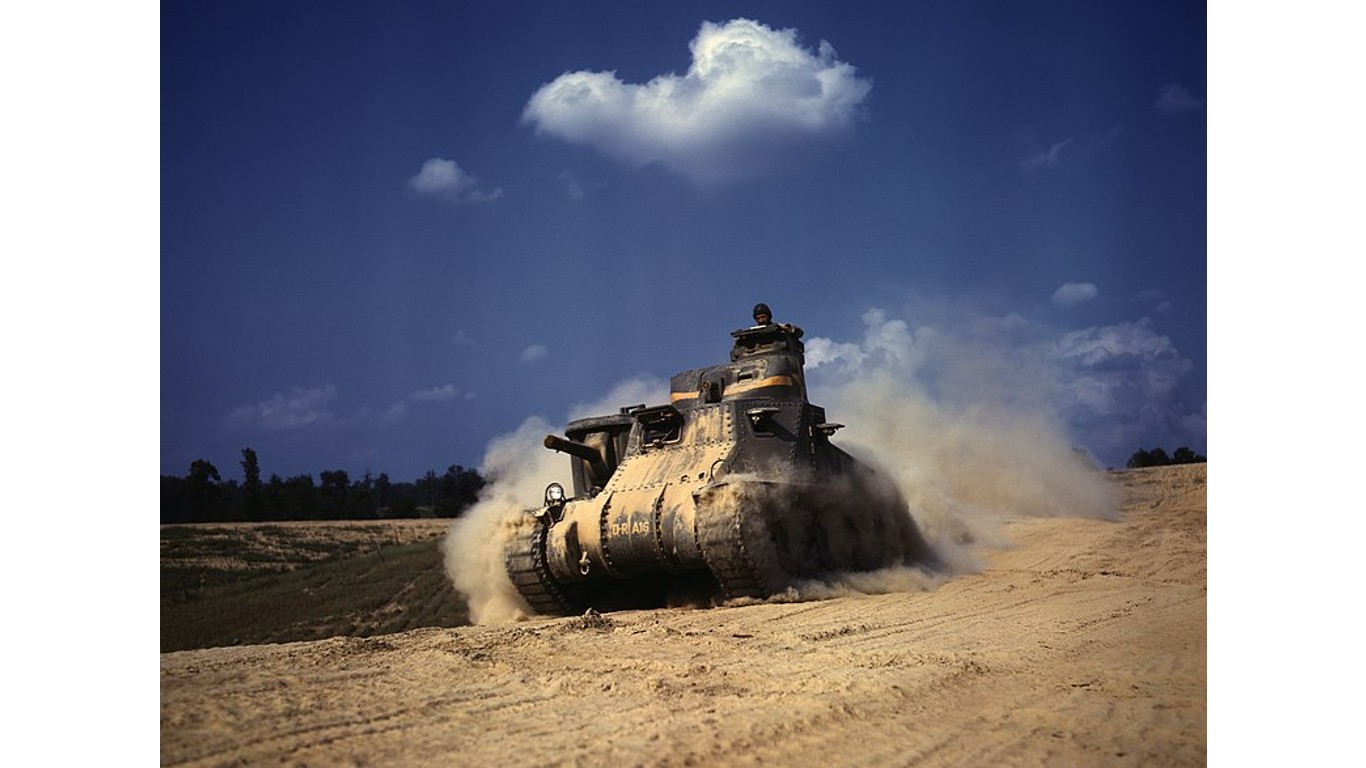
- Type: Medium tank
- Year entered service: 1941
- Top speed: 26.1 mph
- Crew size: 6
- Weight: 60,001 lbs
- Armament: 75mm main gun, 37mm cannon, 7.62mm machine guns
10. M4 Sherman
- Type: Medium tank
- Year entered service: 1942
- Top speed: 23.9 mph
- Crew size: 5
- Weight: 62,611 lbs
- Armament: 75mm main gun, 12.7mm machine gun, 7.62mm machine guns, smoke mortars, flamethrowers
9. M4A3 HVSS Sherman (Easy Eight)
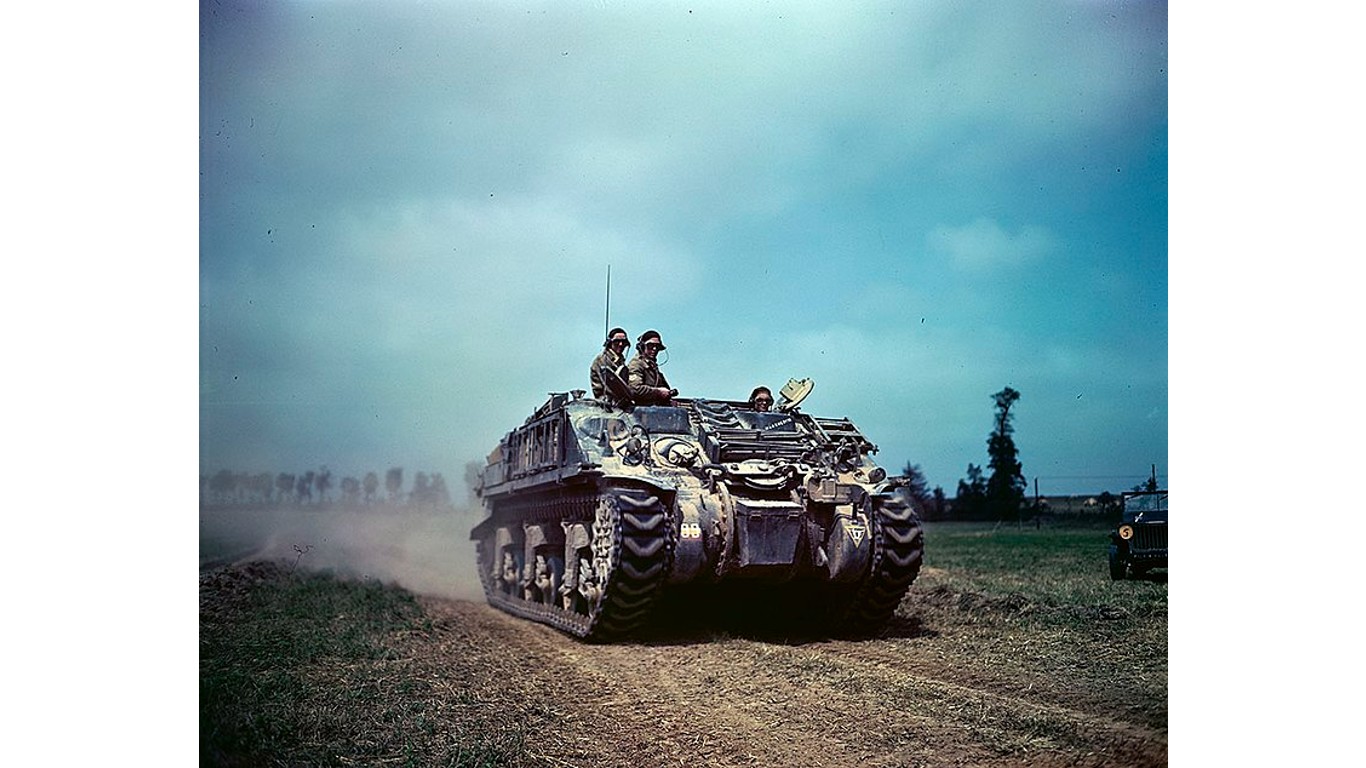
- Type: Upped-gunned medium tank
- Year entered service: 1944
- Top speed: 23 mph
- Crew size: 5
- Weight: 65,036 lbs
- Armament: 76mm main gun, 12.7mm machine gun, 7.62mm machine guns
8. Sherman Jumbo
- Type: Up-armored medium tank / assault tank
- Year entered service: 1944
- Top speed: 21.7 mph
- Crew size: 5
- Weight: 83,776 lbs
- Armament: 75mm main gun, 12.7mm machine gun, 7.62mm machine guns, smoke mortar
7. M26 Pershing
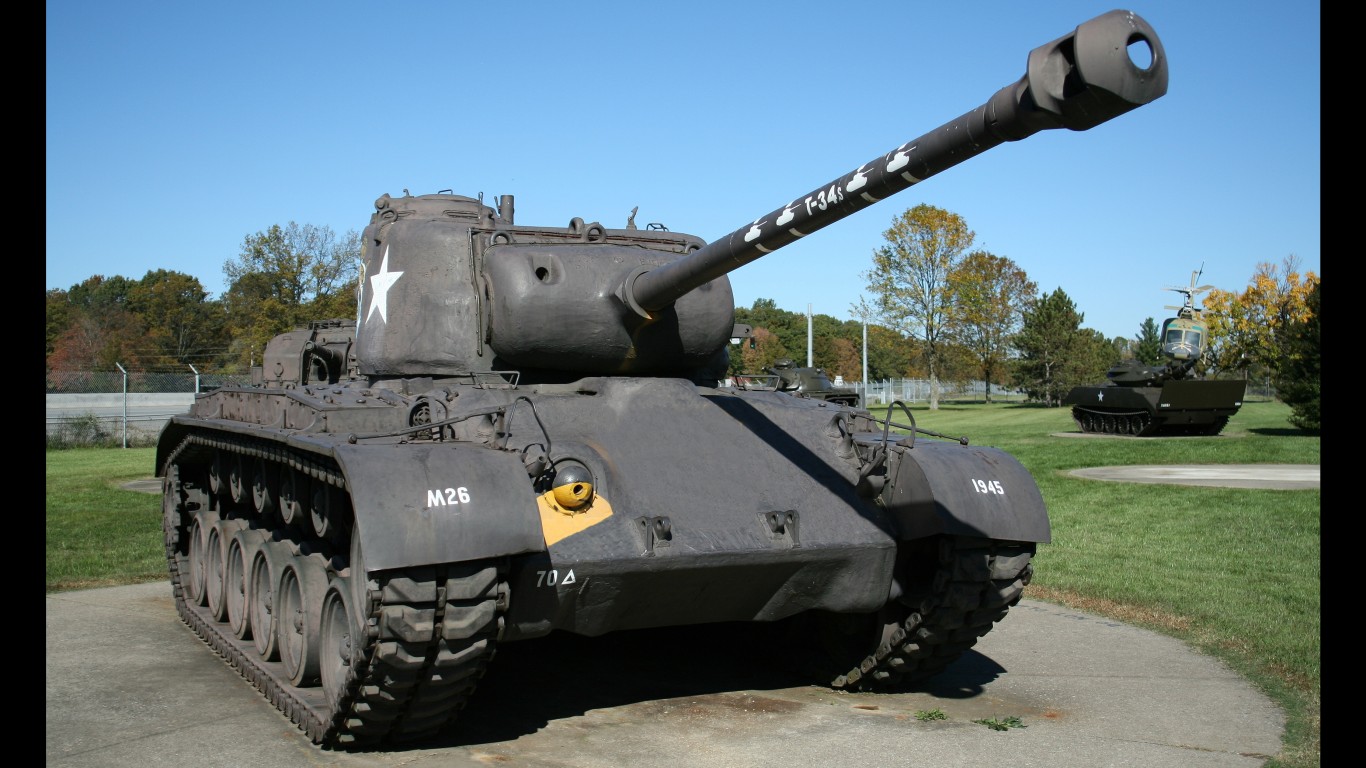
- Type: Heavy tank / medium tank
- Year entered service: 1945
- Top speed: 24.9 mph
- Crew size: 5
- Weight: 92,594 lbs
- Armament: 90mm main gun, 12.7mm machine gun, 7.62mm machine guns
6. M46 Patton (General Patton)
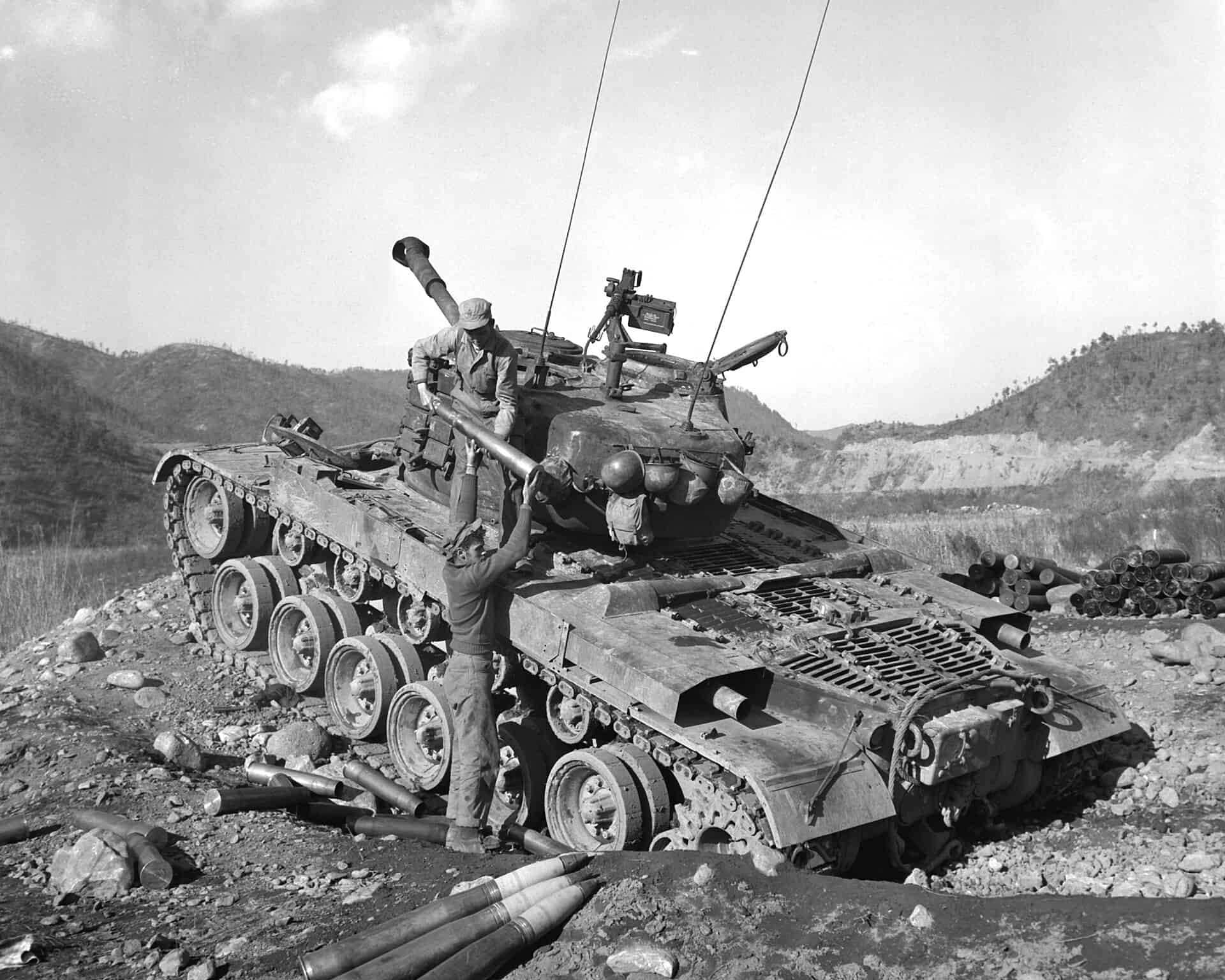
- Type: Medium tank tracked combat vehicle
- Year entered service: 1950
- Top speed: 29.8 mph
- Crew size: 5
- Weight: 97,003 lbs
- Armament: 90mm M4A1 main gun, 12.7mm machine gun, 7.62mm machine guns
5. M47 (Patton II)

- Type: Medium tank tracked combat vehicle
- Year entered service: 1951
- Top speed: 29.8 mph
- Crew size: 5
- Weight: 101,787 lbs
- Armament: 90mm M36 main gun, 12.7mm M2 machine gun, 7.62mm machine guns
4. M60 (Patton)
- Type: Main battle tank
- Year entered service: 1960
- Top speed: 30 mph
- Crew size: 4
- Weight: 107,330 lbs
- Armament: 105mm M68 main gun, 12.7mm machine gun, 7.62mm machine guns, smoke grenade dischargers
3. M48 Patton

- Type: Medium tank
- Year entered service: 1952
- Top speed: 29.8 mph
- Crew size: 4
- Weight: 107,998 lbs
- Armament: 105mm main gun, 12.7mm machine gun, 7.62mm machine guns, smoke grenade dischargers
2. M103
- Type: Heavy tank
- Year entered service: 1957
- Top speed: 21.1 mph
- Crew size: 5
- Weight: 125,000 lbs
- Armament: 120mm main gun, 12.7mm machine gun, 7.62mm machine gun
1. M1 Abrams
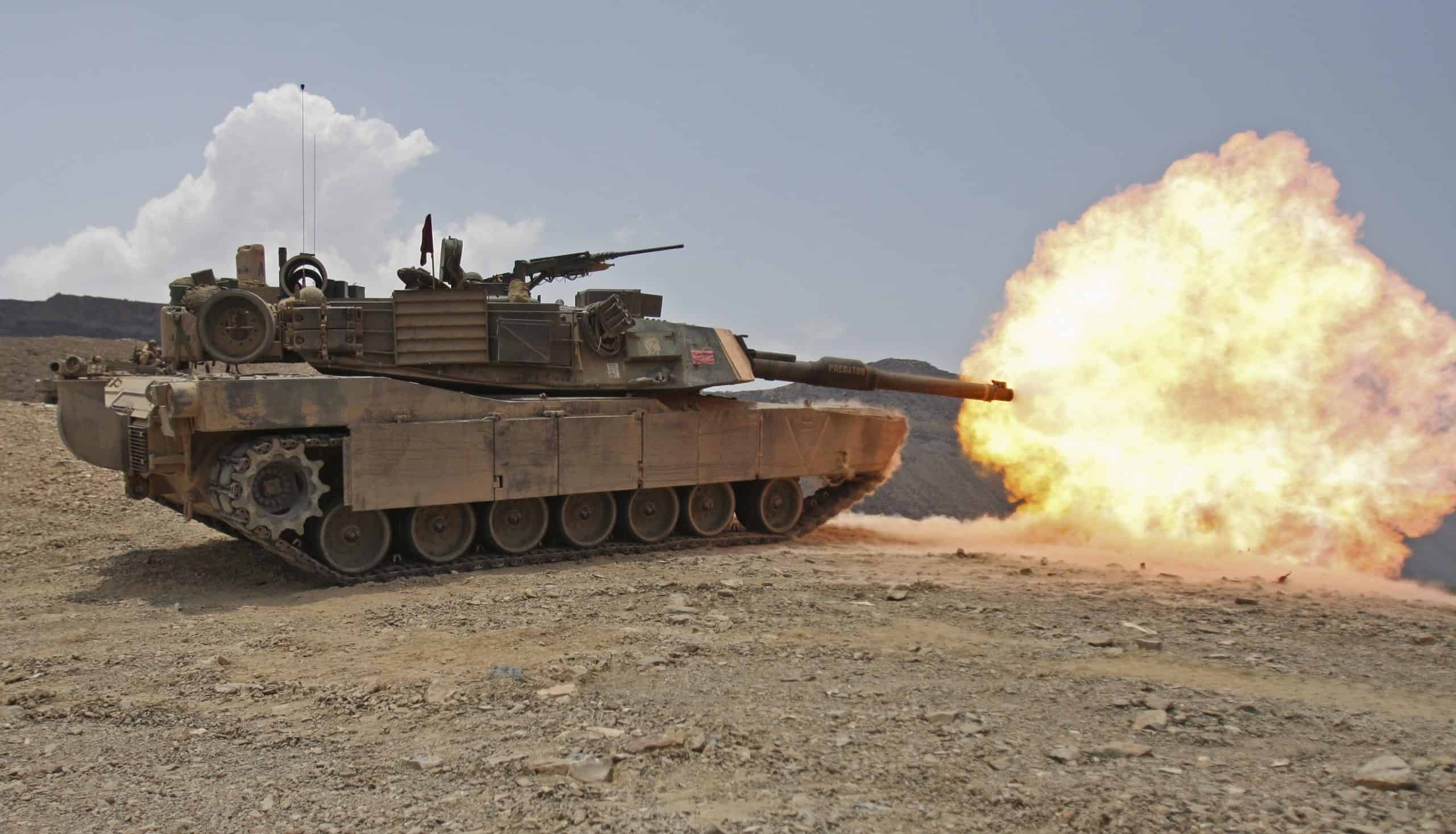
- Type: Main battle tank
- Year entered service: 1980
- Top speed: 41.6 mph
- Crew size: 4
- Weight: 139,081 lbs
- Armament: 120mm Rheinmetall M256A1 main gun, 12.7mm machine guns, 7.62mm machine guns, smoke grenade dischargers
Take Charge of Your Retirement In Just A Few Minutes (Sponsor)
Retirement planning doesn’t have to feel overwhelming. The key is finding expert guidance—and SmartAsset’s simple quiz makes it easier than ever for you to connect with a vetted financial advisor.
Here’s how it works:
- Answer a Few Simple Questions. Tell us a bit about your goals and preferences—it only takes a few minutes!
- Get Matched with Vetted Advisors Our smart tool matches you with up to three pre-screened, vetted advisors who serve your area and are held to a fiduciary standard to act in your best interests. Click here to begin
- Choose Your Fit Review their profiles, schedule an introductory call (or meet in person), and select the advisor who feel is right for you.
Why wait? Start building the retirement you’ve always dreamed of. Click here to get started today!
Thank you for reading! Have some feedback for us?
Contact the 24/7 Wall St. editorial team.


